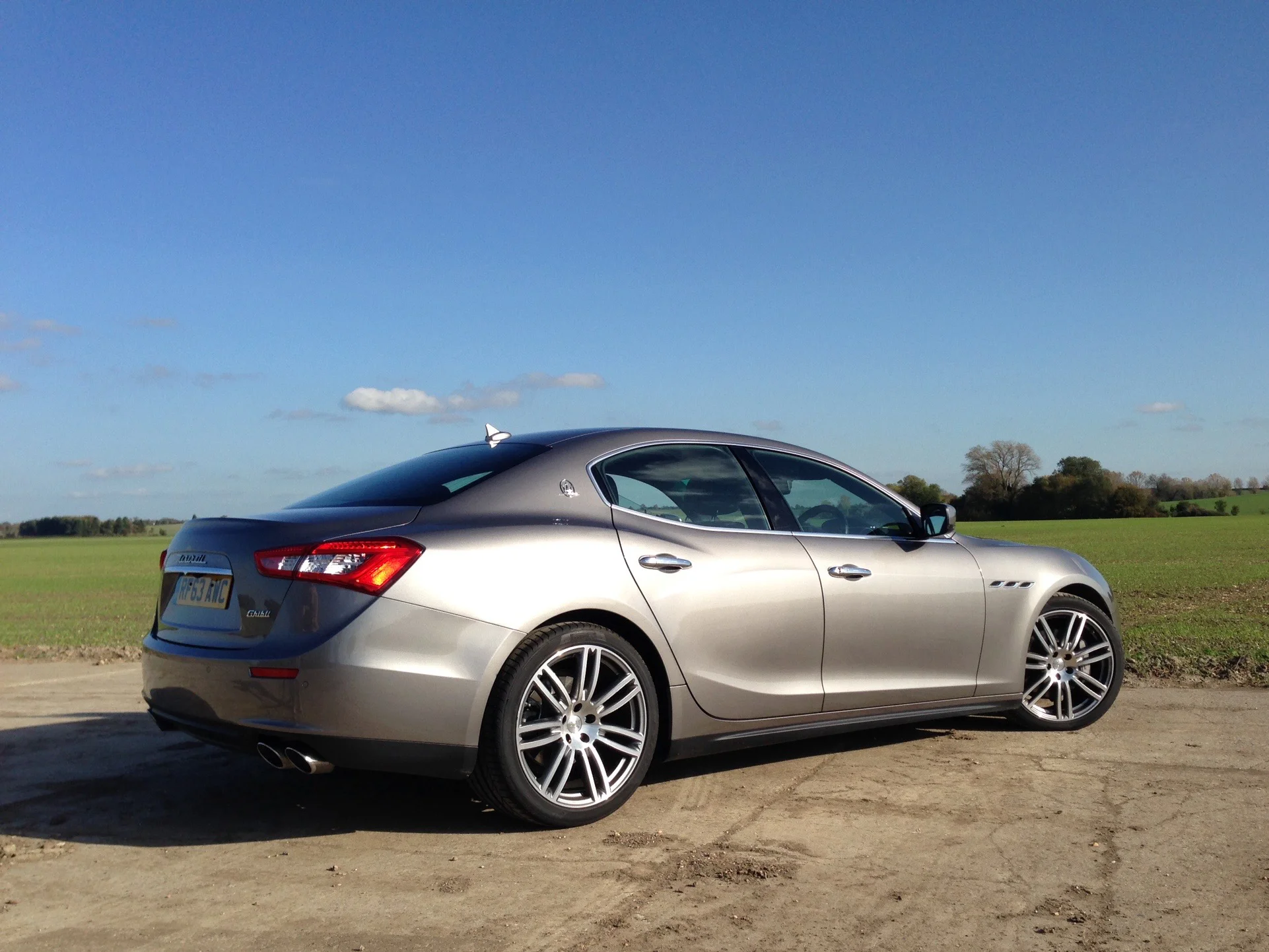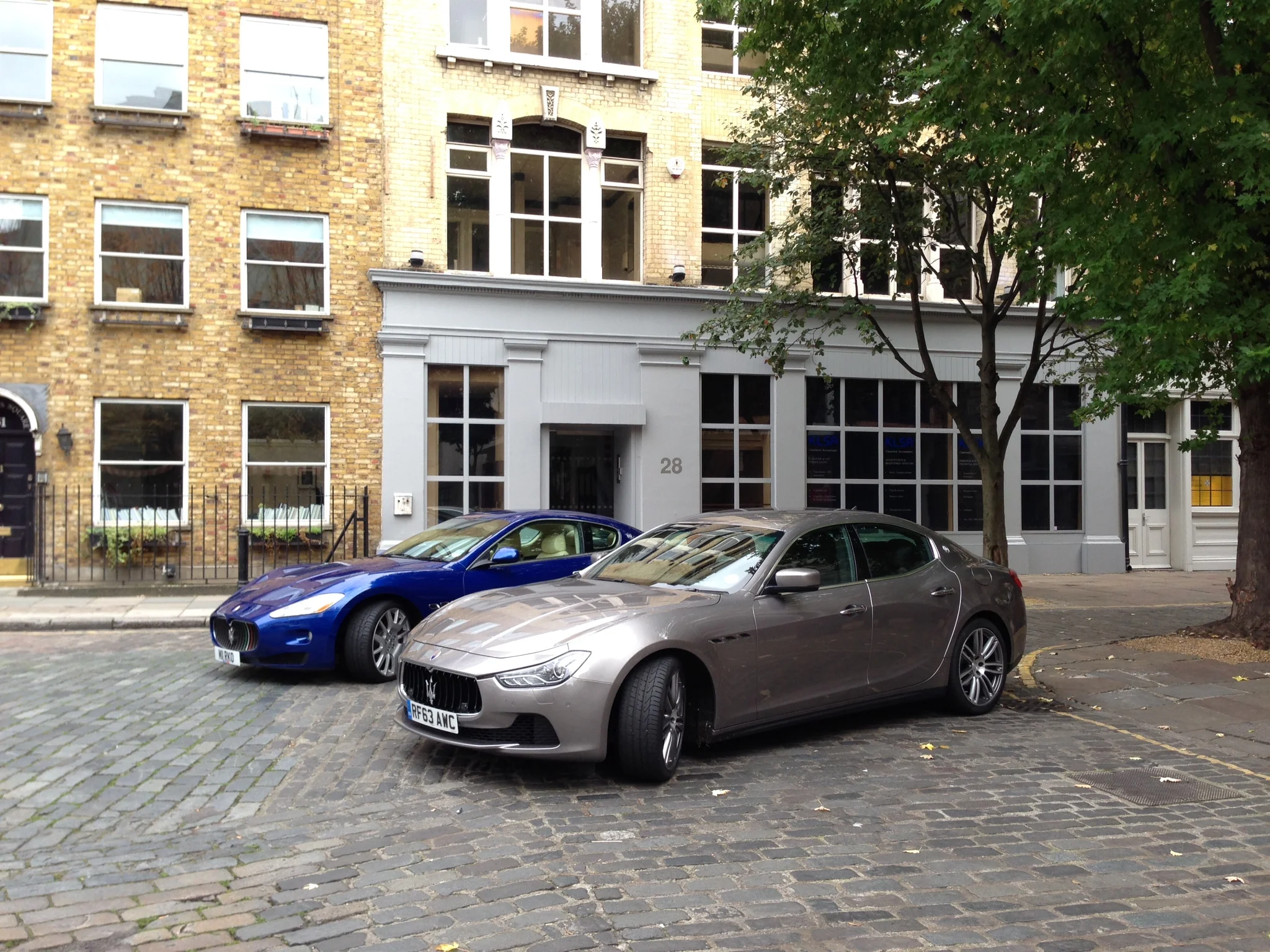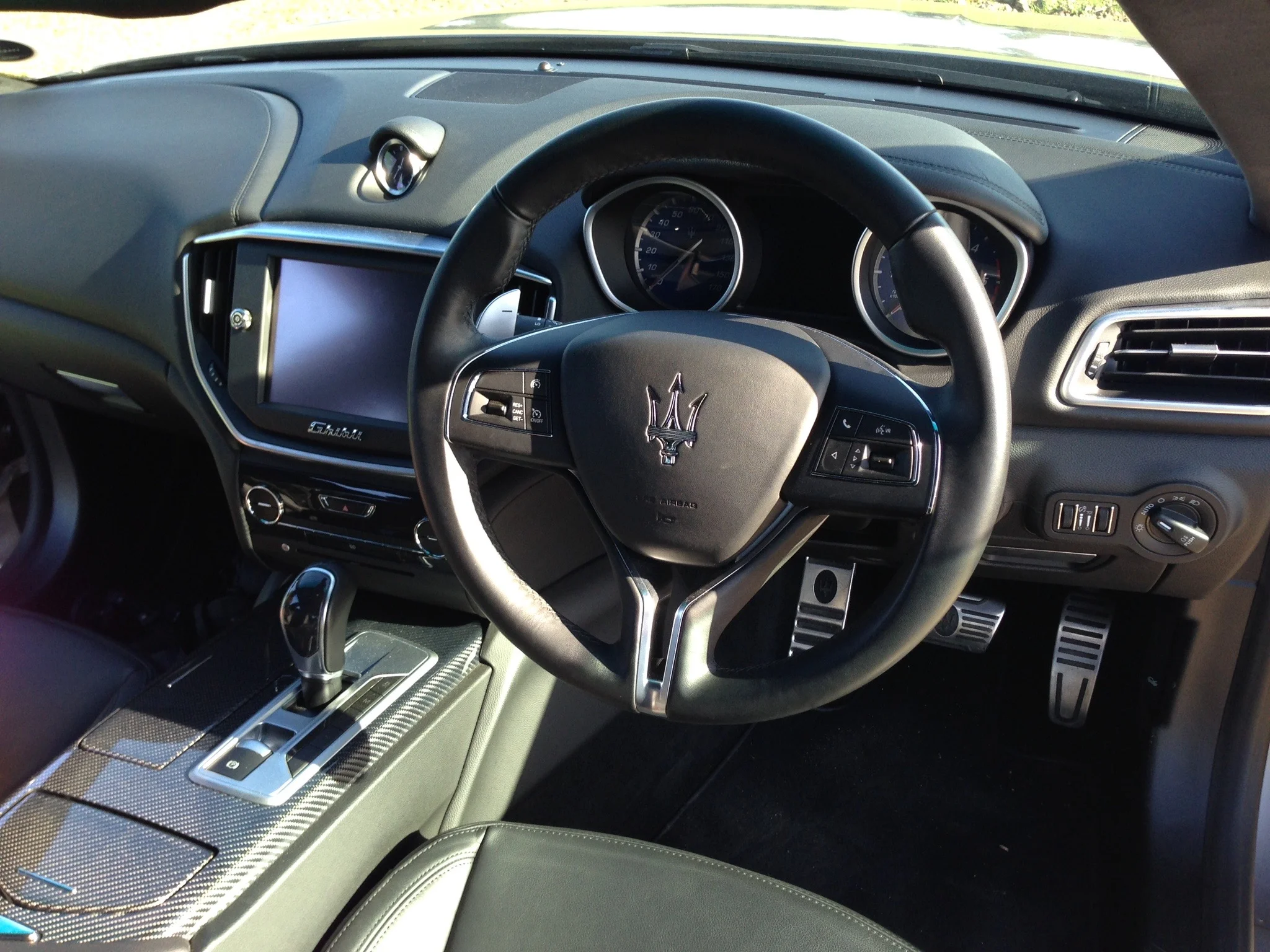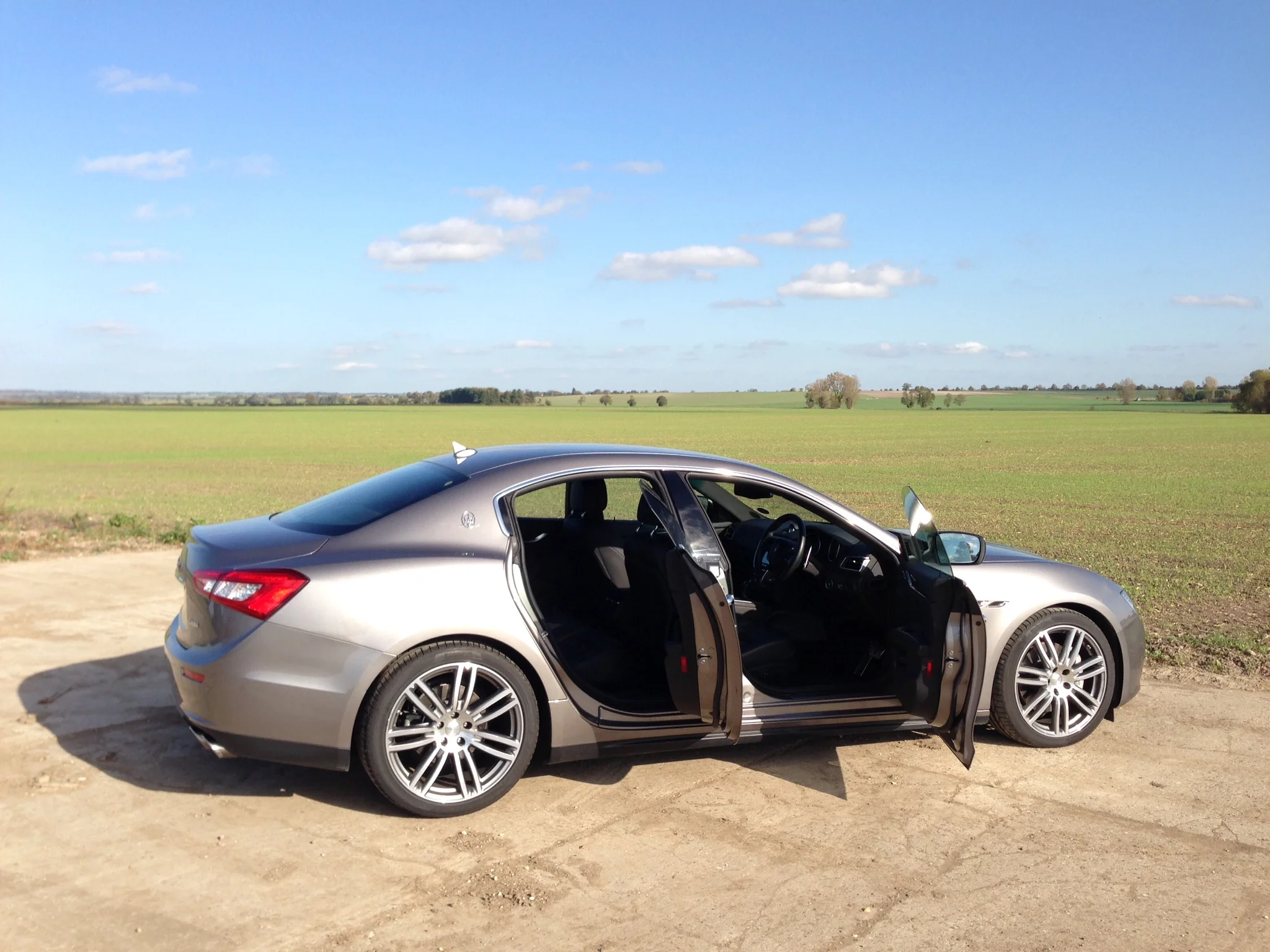





Maserati goes mainstream with the Ghibli. We drive the diesel version to see if it's worthy of the illustrious badge.
Now in its centenary year, Maserati has revived the evocative Ghibli nameplate - but for the first time ever, it's been applied to a 4-door saloon. And the shocks don't stop there, as under the bonnet is another first for the Italian luxury carmaker - a diesel engine!
What's going on? Has Maserati lost the plot?
Well the short answer is no! The new Ghibli is indeed available with a turbodiesel engine and it is a saloon - but let's not cry heresy just yet. Yes, Maserati is celebrating its 100th anniversary this year, but to make sure it stays around for the next hundred years, it needs to develop cars that are more mainstream and therefore likely to appeal to a far larger audience.
With the new Ghibli, Maserati is courting European company executives who might otherwise choose BMWs, Audis, Mercs or Jags, but since the vast majority of these also choose diesel power units for better economy and tax breaks, the introduction of an oil-burner was simply non-negotiable.
Maserati has set some pretty ambitious sales targets and is expecting the diesel-powered versions of both the Ghibli and its larger sibling, the Quattroporte, to be pivotal in achieving them.
At the time of writing, the numbers look promising with 1,018 UK registrations in the first ten months of the year corresponding to an increase of 276 percent over the same period last year. Maserati further claims that the UK is establishing itself as a leading market in Europe for the brand, second only to Italy.
"the throttle response Is silky smooth and rapid progress Is effortless..."
But the sales success can't be put solely down to the Ghibli's new power unit. Fair credit should also go to the striking new design. Although it bears a clear family resemblance to the flagship Quattroporte, the Ghibli is a foot shorter and its saloon bodywork features more coupe-like styling cues.
Up front in particular, its snarling face is created by the slightly sinister bi-xenon headlights and a gaping grille, which hints strongly at the ageing - but still beautiful - GranTurismo coupe.
Inside, the somewhat soberly styled cabin is well-appointed with high-quality leather upholstery fitted as standard but it's practical too, with concealed cupholders, a ventilated glovebox and a large compartment in the centre console to store all your bits and pieces.
An 8.4-inch touchscreen acts as the display for the reversing camera as well as a control interface for the radio, navigation, DVD player and Bluetooth connectivity.
Maserati claims class-leading front legroom, but in the rear, it's a bit cosy, both for leg and headroom. On the plus side, the seats have isofix mounts for child seats and they split 60:40, providing access to the 500-litre boot, which should be more than big enough to cope with an average family's summer holiday luggage - although it sounds terribly cheap when you close it.
For the purists, there are of course more powerful twin-turbo petrol Ghiblis available too, but when it comes to outright grunt, the 3.0-litre V6 diesel's 600Nm of torque outstrips even the range-topping 410bhp Ghibli S - which can only manage 550.
So while we're on the numbers, the turbodiesel's 275bhp is enough to launch the saloon from 0 to 62 in a creditable 6.3 seconds and on to a flat out maximum of 155mph, where limits allow.
But how do those figures translate into the driving experience? Well, in terms of the power delivery, the throttle response is silky smooth and rapid progress is effortless thanks to the ZF 8-speed automatic gearbox but popping it into Sport mode delivers much snappier shifts and injects a little more drama to proceedings.
"looks to die for and a badge steeped In automotive history..."
Importantly, dramatically rapid acceleration can soon be calmed with serene deceleration thanks to the excellent Brembo brakes which Maserati says can bring the Ghibli from 62mph to a complete halt in just 36 metres - a claim I have no reason to doubt.
The rear-wheel-drive Ghibli's 50:50 weight distribution and limited slip differential ensure perfect balance and surefooted traction, but sadly the steering lacks the sensitivity to give you the confidence to fully exploit these attributes.
Around town the ride is unsettled by poor surfaces, which cause crashing and thudding to permeate the cabin and the rear wheels are often found scrabbling for grip when pulling out of side roads to join the cut and thrust of urban traffic.
The optional sports suspension and 20-inch alloy wheels fitted to our test car probably don't help matters but the latter do look rather gorgeous so we'll say no more - and you can always opt for the Skyhook adaptive damping system which promises greater comfort for an extra £2,000 or so.
When it comes to running costs, combined fuel economy of 47.8mpg and CO2 emissions of 158g/km are not bad, but depreciation is an unknown for now.
The Ghibli doesn't come cheap. Hand over 50 grand for the diesel and you'll get less than a £1,000 change. Raid the options list to get the spec of our test car and you'll push the price to over £60k.
But hang on a minute. A Maserati for less than £50,000? A baby Quattroporte blessed with looks to die for and a badge steeped in automotive history? That's starting to sound like a bit of a bargain.
And there lies the issue, really. Very few, if any, buyers choose a Maserati on purely rational grounds. Yes, the Ghibli's diesel engine is a nod towards sensible, logical individuals but ultimately, those ruled by their heads will probably buy German. Those who listen to their hearts however, may well be swayed by this flawed yet rather fabulous Italian.
